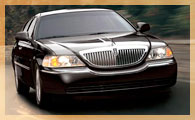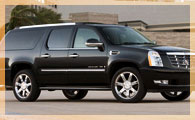How to Stop an Engine from Overheating
If your car’s cooling system is not working properly, heat can destroy your car’s engine. If you notice your car starting to overheat, taking the following steps can help prevent harm to your vehicle until you can repair your cooling system.
If it is safe to stop the car
- Pull over. If possible, pull over and turn off your car to allow the engine to cool.
- Open the hood to allow heat to disperse faster.
- Do not open your radiator pressure cap (the cap on top of the radiator) while the engine is hot. Doing so is very likely to release a high pressure combination of steam and radiator fluid that can cause very serious burns.
- Check the coolant reservoir tank and fill if needed. Most modern cars have a plastic reservoir of coolant connected to the top of the radiator. This will allow you to see if your coolant is low. Many have marks indicating the proper level of coolant when the engine is hot.
- Check to see if the coolant is at that level.
- Add coolant (or water, in a pinch) to your reservoir to the full/hot line. On most cars, you can add liquid to your reservoir even if the car is hot. Check the owner’s manual to be sure, or wait for the car to cool before opening.
- If your car only has a radiator and no coolant reservoir, you must wait for it to cool before checking the level of coolant.
- Determine whether to drive on or call for help.
- If the car was simply low on coolant and you were able to refill it, it may be safe to drive on. Follow the instructions below for how to minimize the risk of overheating if you do so.
- If the car appears to be out of coolant entirely, do not drive it. You can quickly cause severe harm to your engine by doing so.
- If help is readily available, you may be better off calling for a tow truck than driving the car.
- If no help is available or conditions are otherwise unsafe you may need to drive on regardless of whether you were able to solve the problems. Read below for how to manage your car if this is the case.
If you need to drive the car
- Turn the air conditioning off. If your car has air conditioning, turn it off. Air-conditioning puts a load on the engine that you want to avoid right now.
- Use the heater to disperse engine heat. Flip the climate controls to vent, turn the heater all the way up, and turn the fan all the way up. If the weather is hot, the inside of the car will heat up quite a lot. Point the vents out the windows as much as possible to help reduce the temperature.
- Why this works: The heater in your car uses engine heat to warm air in the cabin. Running your heater full blast takes a significant amount of heat away from the engine.
- Keep a close eye on the temperature gauge or light. Pull over and turn off the engine if you have to. Remember that if your car overheats too much, it will ruin the engine.
- Use some of the following driving tactics to minimize overheating.
- Turn off your engine, but only if you are sitting in traffic or stopped at a light and not moving for more than a minute. Keep a lookout ahead for when the traffic will move and turn your engine on before that point.
- Keep it steady in stop and go traffic. It is better to move at a steady slow pace than to go fast, stop, go fast stop, etc. (Generally people will not cut you off in stop and go traffic since everyone is stuck in the same situation.)
- If your vehicle has a belt-driven radiator fan (usually rear wheel drive and four wheel drive vehicles) and you are stuck in traffic, place the transmission in neutral or park, and smoothly increase the engine speed to 2000 RPMs. Hold the RPM there for a minute or so. This will increase the speed of the engine, and in turn, turn the water pump and radiator fan faster. This will draw more air through the radiator to dissipate the heat. If your car has electric fans (typically front-wheel-drive vehicles), this method will not work for you.
- Wait out rush hour traffic. Pull over if you think your car will break down in stop and go traffic. Turn off the engine and wait for the traffic to start moving normally. Once the traffic starts flowing again, it is better for you to drive faster than slower as more air will come in and cool your engine.
Video
In this video from defensivedriving.com, nationally recognized driver safety expert Dr. William Van Tassel, Manager of Driver Training Operations at the American Automobile Association’s (AAA) National Headquarters explains practical steps you can take.
Tips
- Take your car to a mechanic ASAP. While the above steps are good when you’re in a pinch, they won’t help in the long run.
- If your coolant is leaking, you will have to continually replenish it. Pull into locations likely to have a water source that they won’t mind you using. Many service stations have water you can use.
- When possible use a proper water/antifreeze mixture in your vehicles’ cooling system. Water should only be used in emergencies, and after the cooling system problem solved have the system completely drained and refilled with the proper antifreeze water mixture.
- In extreme cases, the engine may continue running after you turn the key to off. This is because the engine is so hot that it is auto-igniting even without the electric spark. In this situation put on the handbrake and then put the car into gear. This should cause the engine to stall.
- If your engine is overheating due to excessive load (such as driving up a long, steep incline or pulling a heavy trailer) it is typically better to pull off to the side of the road, shift the transmission to neutral (or park) and rev the engine slightly (2500 to 3000 rpm). This will allow the cooling system to actively cool the engine while it is under no load and is more effective than shutting the engine off, which only allows heat to dissipate passively. However, if your engine is out of coolant then you should immediately turn the engine off and open the hood of the vehicle to allow the heat to dissipate.
- If you are in slow-moving traffic, you can pop your hood. It will stay closed on the safety catch, but open a small gap, allowing greater ventilation (you’ll see cops and cab drivers do this in big cities on hot days).
- If your car has electric radiator fans, you may be able to activate the electric fans with the engine off. With the car overheated, turn the ignition off (to stop the engine) and then back on without starting the engine. On some cars, the electric fans are wired to turn on even with the engine off…
- Coolant filler pressure caps are failing by the thousands after 8 years of service costing thousands of dollars to be spent for unneeded repairs that don’t help.If your vehicle is eight years or older replace the cap before trouble starts! A vehicle that looses coolant when the engine is turned off very likely has a cap that is not holding the required pressure (most require 15 or 16 lb.)
Warnings
- To avoid the risk of very serious burns, do not remove a radiator cap from an overheated engine. Wait for it to cool.
- When filling your overheating car with water, never use cold water. When the cold water contacts the extremely hot engine, there’s enough thermal stress to crack your engine block. Always allow the water to warm to ambient temperature.


